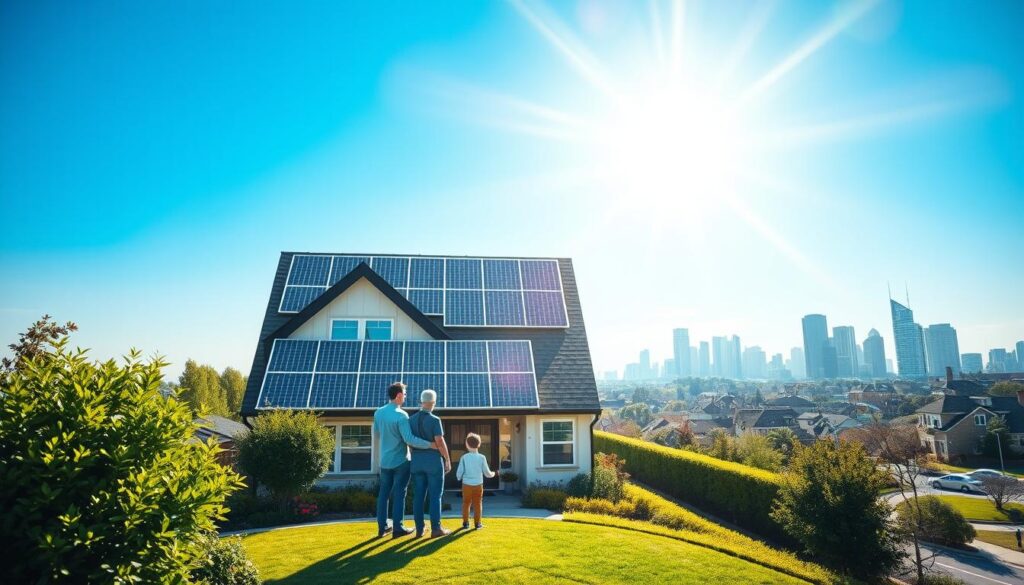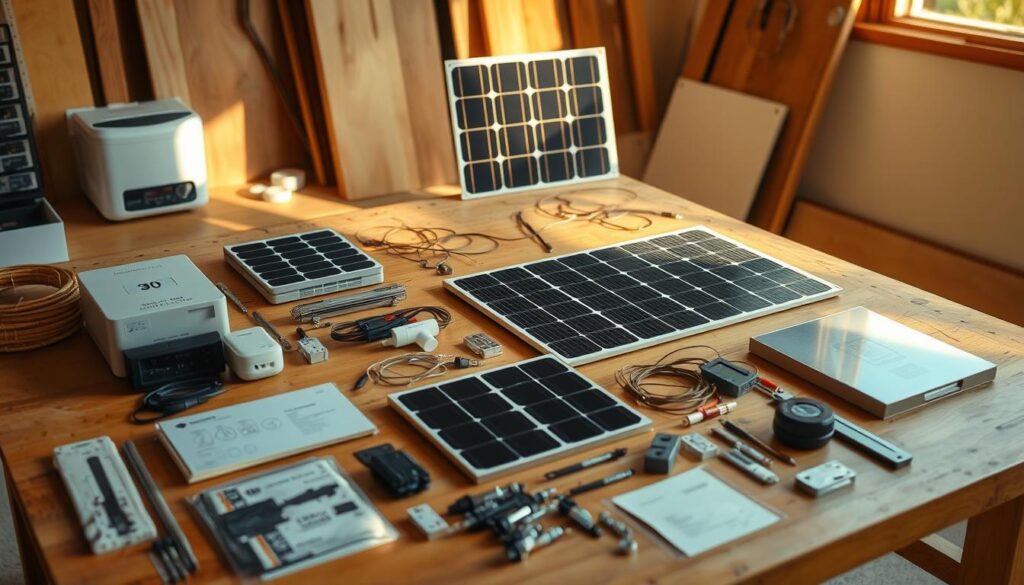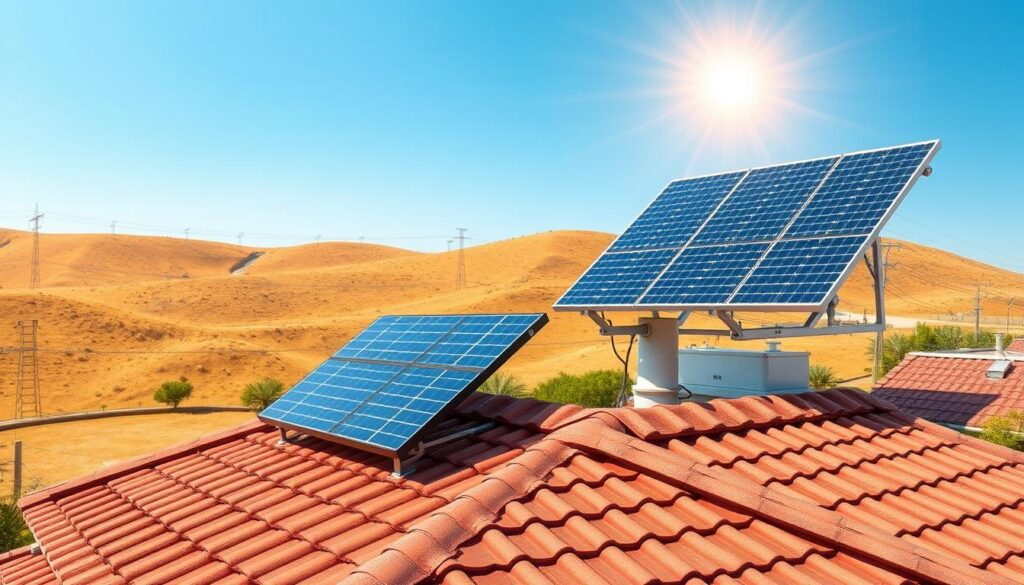Are you looking for a way to reduce your energy bills while helping the environment? Solar panels might be the perfect solution. Over the past decade, advancements in technology and increased affordability have made solar systems a popular choice for many American households.
Since 2008, hundreds of thousands of installations have taken place across the country. This growth is largely due to investments from the U.S. Department of Energy’s Solar Energy Technologies Office (SETO). These efforts have made renewable energy more accessible and efficient for everyday use.
Switching to solar energy not only lowers your utility costs but also contributes to a cleaner environment. By generating your own power, you can reduce reliance on fossil fuels and decrease your carbon footprint. Plus, with financial incentives like tax credits, the initial investment becomes even more manageable.
This guide will walk you through the benefits, installation options, and available incentives. Whether you’re considering a DIY project or professional installation, embracing solar technology is a smart, eco-friendly choice for your household.
Key Takeaways
- Solar panels can significantly reduce energy bills and environmental impact.
- Over 4 million American households now generate their own power with solar energy.
- Tax credits of up to 30% are available for solar system installations until 2033.
- Homes with solar systems sell for an average of 4% more than those without.
- Switching to solar can save homeowners thousands of dollars over the system’s lifetime.
Introduction to Solar Energy Essentials
Harnessing the sun’s energy is simpler than you might think. Solar systems have become a cornerstone of modern renewable energy, offering a sustainable way to power your daily life. These systems are designed to capture sunlight and convert it into usable electricity, making them a smart choice for both the environment and your wallet.
How Solar Panels Convert Sunlight into Energy
At the heart of every solar system are photovoltaic cells. These cells absorb sunlight and generate direct current (DC) electricity. An inverter then converts this DC power into alternating current (AC), which is what your household appliances use. This process is efficient, reliable, and can significantly reduce your reliance on traditional energy sources.
One of the most exciting advancements in solar technology is the use of batteries. These devices store excess energy generated during the day, allowing you to use it at night or during cloudy weather. With a solar battery, you can maximize your energy independence and ensure a consistent power supply.
When it comes to solar systems, you have two main options: grid-tied and off-grid. Grid-tied systems are connected to the local utility grid, allowing you to sell excess energy back to the power company. Off-grid systems, on the other hand, operate independently and rely on batteries for storage. Both options have their unique benefits, depending on your needs and location.
By understanding these essentials, you can make informed decisions about adopting solar energy. Not only does it lower your utility bills, but it also contributes to a cleaner, greener planet. As one expert put it,
“Solar energy is not just a technology; it’s a lifestyle change that benefits everyone.”
Why Solar Energy Makes Sense for American Homeowners
American families are finding value in reducing their carbon footprint and energy costs. By adopting renewable energy, you can make a positive impact on the environment while saving money in the long run. This dual benefit is driving more households to explore clean energy solutions.
Environmental & Financial Benefits
One of the biggest advantages of renewable energy is its ability to lower monthly electricity bills. With rising energy prices, investing in clean power can provide significant savings. Over the system’s lifetime, homeowners can save thousands of dollars, making it a smart financial decision.
Beyond cost savings, renewable energy reduces your carbon footprint. A typical household can cut emissions by 3 to 4 tons annually. This contributes to cleaner air and a healthier planet for future generations.
Government incentives make the transition even more appealing. The federal tax credit offers up to 30% off the installation cost, available until 2033. Local programs and net metering further reduce expenses, making renewable energy accessible to more families.
“Renewable energy isn’t just about saving money—it’s about creating a sustainable future for everyone.”
With these combined benefits, it’s no wonder that more American homeowners are embracing clean energy. Whether you’re looking to save on bills or protect the environment, renewable energy is a win-win solution.
Benefits of Home Solar Panels
Investing in renewable energy can transform your finances and property value. By adopting clean power solutions, you not only reduce monthly bills but also enhance your home’s market appeal. Let’s explore the practical advantages of making this switch.

Lowering Energy Bills
One of the most immediate benefits is the reduction in electricity costs. By generating your own power, you can significantly cut reliance on traditional energy sources. This translates to lower monthly bills and long-term savings.
For example, a well-sized system can cover most or all of your energy needs. Some households even generate surplus power, which can be sold back to the grid. This creates an additional income stream while maximizing your investment.
Enhancing Property Value
Installing panels on your roof can boost your home’s resale value. Studies show that properties with renewable energy systems sell for an average of 4.1% more than those without. This premium can add tens of thousands of dollars to your final sale price.
Additionally, homes with these systems tend to sell faster. Buyers are increasingly drawn to properties that offer energy savings and environmental benefits. This makes renewable energy a smart upgrade for homeowners planning to sell in the future.
When choosing a system, consider your roof size and energy needs. A professional guide can help you select the right type and size for optimal performance. As industry experts note,
“The right system not only saves money but also adds lasting value to your property.”
Step-by-Step Guide to Installing Your Home Solar Panels
Ready to take control of your energy future? Here’s how to get started. Installing a system to generate your own power is a rewarding project that can save you money and reduce your environmental impact. Let’s walk through the key steps to make the process smooth and straightforward.
Assessing Your Energy Needs
The first step is understanding your current energy consumption. Review your utility bills from the past year to determine your average usage. This will help you calculate how much energy production you’ll need from your system.
Consider future changes, like adding an electric vehicle or expanding your household. These factors will influence the size and type of system you choose. A professional assessment can also provide valuable insights tailored to your specific needs.
Choosing Grid-Tied vs Off-Grid Options
Next, decide between a grid-tied or off-grid system. Grid-tied systems are connected to the local utility grid, allowing you to sell excess energy back. This option is ideal for those who want to offset costs while maintaining a reliable power source.
Off-grid systems, on the other hand, operate independently and rely on batteries for storage. They’re perfect for remote locations or those seeking complete energy independence. Both options have their unique benefits, so choose based on your goals and location.
When planning your investment, consider the amount of sun your property receives. Areas with consistent sunlight will generate more energy, maximizing your system’s efficiency. Use tools like solar maps to evaluate your site’s potential.
“The right system not only saves money but also provides peace of mind knowing you’re contributing to a cleaner planet.”
By following these steps, you’ll be well on your way to enjoying the benefits of generating your own power. Whether you’re looking to save on bills or reduce your carbon footprint, this guide makes the process accessible and achievable.
DIY Tips for Selecting a Solar Panel Kit
Choosing the right components for your DIY project can make all the difference. Whether you’re a seasoned DIY enthusiast or a beginner, understanding the essentials of your kit ensures a smooth installation and optimal performance. Let’s dive into practical advice to help you select the best system for your needs.

Evaluating System Components and Warranty
When selecting a DIY kit, start by evaluating the components. Look for high-quality panels, inverters, and mounting hardware. These elements directly impact your system’s production and longevity. For example, premium panels may cost more but offer higher efficiency and durability.
Warranty details are equally important. Many kits come with a 25-year guarantee, ensuring your investment is protected. A strong warranty not only covers defects but also guarantees a minimum level of energy production over time. This provides peace of mind and long-term value.
Customizing Your Solar Setup for Your Home
Customization is key to maximizing your system’s efficiency. Consider your property’s layout, roof size, and energy needs. For instance, ground-mounted kits are ideal for properties with ample space, while roof-mounted options are perfect for urban settings.
Additionally, explore kits that allow for future expansion. If your energy needs grow, you can easily add more panels or batteries. This flexibility ensures your system evolves with your lifestyle.
| Component | Key Features | Warranty |
|---|---|---|
| Panels | High efficiency, durable materials | 25 years |
| Inverter | Converts DC to AC, reliable performance | 10-25 years |
| Mounting Hardware | Weather-resistant, easy installation | 10 years |
Don’t forget to check for applicable tax credits. The federal residential solar energy credit offers up to 30% off your installation costs, making your DIY project even more affordable. Combine this with local incentives for maximum savings.
“A well-designed DIY kit not only saves money but also empowers you to take control of your energy future.”
By focusing on quality components, customization, and incentives, you can create a system that meets your needs and supports a sustainable lifestyle. Start your DIY journey today and enjoy the benefits of clean, renewable solar power.
Understanding Solar Panel Costs and Incentives
Exploring the costs and incentives of clean energy can help you maximize savings. Investing in renewable power involves upfront expenses, but the long-term benefits often outweigh the initial investment. Let’s break down the financial aspects to help you make an informed decision.
Breakdown of System Costs and Price Factors
The total cost of a renewable energy system depends on several factors. System size, energy needs, and panel efficiency all play a role. On average, a typical installation ranges from $17,000 to $25,000 after federal incentives.
Here’s a detailed breakdown of the expenses:
| Component | Average Cost |
|---|---|
| Panels | $3,656 |
| Inverter | $2,991 |
| Mounting Hardware | $997 |
| Electrical Wiring | $2,548 |
Financing is another important consideration. Paying cash upfront often results in the lowest overall cost, while loans may increase expenses by up to 47% over time. However, both options can still lead to significant savings on your monthly bill.
Federal and Local Incentives Overview
Federal and local incentives can significantly reduce your expenses. The federal tax credit offers a 30% reduction on the total installation cost, available until 2033. This can lower your net investment to around $20,000 for an average-sized system.
Many states also provide additional programs, such as rebates and net metering. For example, California homeowners can save up to 70% on their total cost through combined incentives. These programs make renewable energy a more accessible option for many families.
“Taking advantage of incentives not only lowers your upfront expenses but also accelerates your payback period.”
By understanding the costs and incentives, you can make a smart investment in clean energy. Whether you’re looking to reduce your monthly bill or contribute to a greener planet, renewable power offers a financially sound option.
Comparing Installation Options: Roof Mount vs Ground Mount
Deciding between roof and ground installations can significantly impact your energy savings and system efficiency. Each option has unique benefits and challenges, making it essential to evaluate your property and energy needs before choosing.

Advantages and Challenges of Each Option
Roof-mounted systems are the most common choice due to their simplicity and lower initial costs. They utilize existing roof structures, reducing the need for additional materials. However, they may require roof penetration and can complicate future roof repairs.
Ground-mounted systems, on the other hand, offer greater flexibility in panel orientation and easier access for maintenance. They can also integrate storage solutions more effectively. However, they require more space and often involve higher installation costs due to site preparation and structural components.
| Feature | Roof Mount | Ground Mount |
|---|---|---|
| Installation Cost | Lower | Higher |
| Maintenance Access | Challenging | Easy |
| Efficiency | Limited by roof angle | Optimized for sunlight |
| Space Requirements | Minimal | Significant |
When choosing between the two, consider factors like roof integrity, available space, and long-term energy goals. For example, if your property has ample land and you prioritize efficiency, a ground-mounted system might be ideal. Conversely, if you’re working with a limited budget or space, a roof-mounted system could be the better option.
“The right installation method not only maximizes energy production but also aligns with your property’s unique characteristics.”
By carefully evaluating these factors, you can select the installation method that best suits your needs. Whether you prioritize savings, efficiency, or ease of maintenance, both options offer valuable benefits for harnessing renewable energy.
Maximizing Efficiency with Smart Energy Management
Smart energy management can unlock the full potential of your renewable energy system. By integrating advanced tools and strategies, you can optimize performance, reduce costs, and enhance reliability. This approach ensures you get the most out of your investment while contributing to a sustainable future.

Leveraging Tax Credits and Net Metering
One of the biggest advantages of renewable energy is the financial incentives available. The federal tax credit offers up to 30% off your installation costs, significantly reducing your upfront expenses. Additionally, net metering allows you to earn credits for excess energy sent back to the grid, further lowering your electricity bill.
For example, in regions with favorable net metering policies, homeowners can offset up to 50% of their energy costs. This dual benefit makes renewable energy a smart financial choice. As one expert noted,
“Combining tax credits and net metering can accelerate your payback period and maximize savings.”
Monitoring Energy Production and Maintenance Tips
Regular monitoring is essential for maintaining system efficiency. Use software tools and performance trackers to keep an eye on your energy production. These tools provide real-time data, helping you identify issues early and optimize usage patterns.
Working with a certified installer ensures your system meets industry standards and maintains its warranty. They can also provide valuable maintenance tips, such as cleaning panels and checking connections. Proper care extends the lifespan of your system and ensures consistent performance.
Integrating battery storage solutions adds another layer of reliability. These devices store excess energy for use during outages or peak demand hours, reducing reliance on the grid. Advanced systems can even prioritize critical appliances, ensuring uninterrupted power when you need it most.
| Strategy | Benefit |
|---|---|
| Tax Credits | Up to 30% off installation costs |
| Net Metering | Earn credits for excess energy |
| Real-Time Monitoring | Optimize usage and detect issues early |
| Battery Storage | Store energy for outages and peak hours |
By adopting these smart energy management practices, you can maximize efficiency, reduce costs, and ensure long-term reliability. Whether you’re looking to lower your electricity bill or enhance energy independence, these strategies offer valuable advantages for every homeowner.
Conclusion
Making the switch to renewable energy offers both financial and environmental rewards. By reducing your reliance on traditional power sources, you can lower your electricity bills and contribute to a cleaner planet. Over time, the savings add up, making it a smart investment for your area and lifestyle.
One of the standout benefits is the potential to increase your property’s sale value. Studies show that homes with these systems sell faster and at higher prices. Additionally, government incentives make the initial purchase more affordable, ensuring long-term returns.
When considering installation, evaluate your energy use and choose between roof or ground options based on your property’s layout. Proper planning and timely decisions can maximize efficiency and savings. Consulting with experts ensures a tailored solution that meets your needs.
Take the first step today. Explore your options and discover how renewable energy can transform your area and lifestyle. The rewards are worth the effort.
